Last update
2025
Summary
The Salt of Life project (LIFE11 NAT/BG/000362) restored the lagoon’s water-management infrastructure at Atanasovsko Lake by repairing dykes and barriers, dredging 23 km of the perimeter channel and rehabilitating 20.5 km of embankments to secure long-term habitat conditions for roosting and breeding birds. Building on this, Lagoon of LIFE (LIFE17 NAT/BG/000558, 2018–2024) scaled up restoration: three major earth dikes (~5.8 km) were rebuilt, 17.6 km of mini-dikes restored and 14.3 km of internal saline channels cleaned; the North sea sluice was repaired in 2021. These actions increased water exchange more than fourfold, stabilised water levels and salinity, improved oxygen, and reduced chlorophyll-a - directly improving ~220 ha with positive effects across >700 ha. A pilot, low-impact method using a mini-excavator to build/maintain mini-dikes reduced cost, time and disturbance and has been widely applied. Macrophyte recovery advanced with Ruppia maritima transplanted (TERFS/Chimove), establishing three self-reproducing colonies. In 2024, Greater Flamingo bred here for the first time in Bulgaria. An After-LIFE plan and an active Public Advisory Council support ongoing maintenance with Black Sea Salinas, strengthening resilience to extreme rainfall and safeguarding salt-extraction infrastructure and lagoon habitats.
Position
Latitude
42.5772
Longitude
27.4749
Project
NWRM
National Id
Bulgaria_11
Installation date
2018-08
Implementation Status
Contact
Jovanka Ignjatovic
RBD code
BG2000
Transboundary
0
Photo gallery
Location of the project
Atanasovsko Lake is immediately north of Burgas on the Black Sea coast, and is cut by the Burgas–Varna road (E87), which splits the lagoon into North and South. Bird access points run along/near the E87.
NUTS Code
BG34 - Югоизточен (Yugoiztochen)
Project's objectives
Establish a functional, efficient and sustainable water-management infrastructure for the lagoon to improve habitat conditions and enable adaptation to climate-change effects.
Reduce impacts of threats (floods, degraded sea connection, polluted surface inflows) on lagoon habitats and target bird species (6 spp.: Collared Pratincole, Kentish Plover, Avocet, Black-winged Stilt, Little Tern, Sandwich Tern) via sustainable habitat management and breeding-site improvements.
Monitor and evaluate effects of restoration measures and feed results into management.
Improve visitor experience and disseminate results; raise public understanding/support for coastal lagoons’ ecological, economic and social values.
Aim to restore and protect 1,458.82 ha of coastal lagoon habitat 1150* (project coverage).
Recover 20 ha of currently drained 1150* and restore physico-chemical characteristics over >720 ha via active water-level/salinity management, channel clearing and a new sluice gate.
Reduce impacts of threats (floods, degraded sea connection, polluted surface inflows) on lagoon habitats and target bird species (6 spp.: Collared Pratincole, Kentish Plover, Avocet, Black-winged Stilt, Little Tern, Sandwich Tern) via sustainable habitat management and breeding-site improvements.
Monitor and evaluate effects of restoration measures and feed results into management.
Improve visitor experience and disseminate results; raise public understanding/support for coastal lagoons’ ecological, economic and social values.
Aim to restore and protect 1,458.82 ha of coastal lagoon habitat 1150* (project coverage).
Recover 20 ha of currently drained 1150* and restore physico-chemical characteristics over >720 ha via active water-level/salinity management, channel clearing and a new sluice gate.
Involved Partners
| Authority type | Authority name | Role | Comments |
|---|---|---|---|
Climate zone
warm temperate moist
Temperature
13
Precipitation
550
Annual rainfall range
300 - 600 mm
Runoff coefficient
0,30
Elevation range
0 m
Slope range
1-2%
Vegetation class
Predominantly halophytic salt-marsh vegetation around the salt pans—annual glasswort (Salicornia europaea) and other Mediterranean salt meadows (Juncetalia maritimi)—with patchy reedbeds (Phragmites) and bulrush (Typha) in fresher pockets; dry fringes host steppe-like grasses/forbs (e.g., Artemisia, Poa, Lolium). Aquatic Ruppia maritima occurs in restored basins.
Water bodies: Ecological Status
Poor
Water bodies: Chemical Status
Good
Water quality status
Surface-water pollution and changes in water regime. Nutrient-loaded inflow from rivers Azmak, Kurbardere and Dermerdere via bypass-channel works.
Project scale
Micro
Project scale specification
The actions are confined to a single coastal-lagoon site (Atanasovsko Lake, immediately north of Burgas and split by the E87), focusing on localised hydromorphological works on dikes, mini-dikes, channels and sluices within the saltpan system.
Performance timescale
5 - 10 years
Project area
10600
Area subject to Land use change or Management/Practice change (ha)
10600
Size
7200
Size unit
ha
Lifespan
50
Old and compromised salt-production infrastructure (separation barriers, water supply facilities) and flood protection (dyke, channel)
Salinas are still in operation, using the traditional salt extraction approach
Total cost
€4,385,161
Costs total information
€1,935,368 : LIFE11 NAT/BG/000362 “Salt of Life” (2012–2018) Total project budget, including technical design, restoration, monitoring, management and public awareness
€2,449,793 : LIFE17 NAT/BG/000558 “Lagoon of LIFE” (2018–2024)
€2,449,793 : LIFE17 NAT/BG/000558 “Lagoon of LIFE” (2018–2024)
Costs capital
2013027
Costs operational
100000
Costs operational information
Annual capital investments from Black Sea Salinas for infrastructure improvements and operation
Administrative annual costs
98000
Financing authorities
Type of funding
EU-funds: LIFE+
Type of funding
Private funds
Comments
Only of LIFE17
Type of funding
Private funds
Comments
Only of LIFE17
Type of funding
Private funds
Comments
Only of LIFE17
Type of funding
Private funds
Comments
Only of LIFE17
Compensations
0
Policy context
Decline of the conservation status of priority Coastal lagoon habitat and the associated protected species due to changes of the hydrological and hydrochemical conditions caused by destruction of water management facilities
Land ownership
National government ~83.9%, Municipality ~10.8%, Private ~4.39%, NGOs ~0.86%
Community involvment
Yes
Design consultation activity
| Activity stage | Name | Key issues | Comments |
|---|---|---|---|
|
Public consultation of Atanasovsko lake Management Plan
|
|||
|
Festival
|
Organise Salt of Life Festival to communicate project objectives and results to the broader public
|
||
|
90+ public events, >1 million media reach; film “Salty People” won international awards, raising Burgas’ profile as the “Pink Salt Lake.”
|
Policy target
| Target purpose |
|---|
|
Improved Biodiversity
|
|
Pollutants Removal
|
|
Oher Societal Benefits
|
Policy pressure
| Pressure directive | Relevant pressure |
|---|
Policy impact
| Impact directive | Relevant impact |
|---|
Requirement directive
| Requirement directive | Specification |
|---|
Contractual arrangements
1
| Arrangement type | Responsibility | Role | Name | Comments |
|---|---|---|---|---|
|
Organisational arrangement
|
Partnership agreement for the implementation of LIFE11 NAT/BG/000362 Project
|
Part of wider plan
1
Wider plan type
| Wider plan type | Wider plan focus | Name | Comments |
|---|---|---|---|
|
Management plan of Atanasovsko lake Maintained reserve
|
Continue the partner-led scheme tracking water regime and hydro-chemistry (e.g., O₂, chlorophyll-a, salinity), habitat condition (1150*, 1310, 1410), Ruppia patches and breeding birds, under the After-LIFE plan and annual expert reporting.
Water-exchange efficiency, dissolved oxygen and chlorophyll-a (as eutrophication indicators), water levels/salinity (with the 2021 sea-sluice fix improving control) and a noted rise in groundwater table in restored areas; species/habitat indicators include breeding bird numbers and the extent/status of lagoon and salt-meadow habitats, plus presence/area of Ruppia maritima colonies; methods include counts, camera/drones/photo-traps, and an integrated monitoring matrix (elsewhere applied with monthly salinity, O₂, pH, temperature).
Maintenance
Routine O&M is led by Black Sea Salinas—mechanised upkeep of dikes, mini-dikes, channels and sluices - within a governance setup involving BBF/BSPB and RIEW Burgas.
Catchment outlet
Monitoring of the populations of target bird species; Monitoring of the area of the target habitats; Monitoring of key hydrological and chemical parameters.
200000
Salt production safeguarded, operations more efficient. Restoring dikes/channels and repairing the main sea sluice improved circulation in benefit of salt extraction; using a mini-excavator for mini-dikes compensates labour shortages and speeds future O&M.
Reduced costs & disturbance. The mechanised mini-dike method cut manual work, materials and restoration time, while limiting disturbance during breeding (project manager statement, 2025).
Market diversification: the project created/promoted 10 new products and 3 value-added services, incl. Pelican soap, Flamingo candle, Laika.bg vegan chocolates (5 types), Gaillot sea-salt chocolate (7% profit donated), “Nature in a box – Atanasovsko Lake,” and “green salt” (Salicornia).
Visitor services: Black Sea Salinas offers lye and mud pool experiences on the south lake (non-medical), strengthening local tourism linked to the salt pans.
Reduced costs & disturbance. The mechanised mini-dike method cut manual work, materials and restoration time, while limiting disturbance during breeding (project manager statement, 2025).
Market diversification: the project created/promoted 10 new products and 3 value-added services, incl. Pelican soap, Flamingo candle, Laika.bg vegan chocolates (5 types), Gaillot sea-salt chocolate (7% profit donated), “Nature in a box – Atanasovsko Lake,” and “green salt” (Salicornia).
Visitor services: Black Sea Salinas offers lye and mud pool experiences on the south lake (non-medical), strengthening local tourism linked to the salt pans.
Flood-risk mitigation protects the salt-extraction infrastructure and site assets (confirmed by project team and municipal notes on the benefits of restored circulation).
Recent negative impacts :
Storm damage (Nov 2023): the lakeside simBiotic visitor space was heavily damaged/closed, prompting plans for a new information centre.
Lower salt tonnage in recent years, but greater product/service diversification around lake resources.
Recent negative impacts :
Storm damage (Nov 2023): the lakeside simBiotic visitor space was heavily damaged/closed, prompting plans for a new information centre.
Lower salt tonnage in recent years, but greater product/service diversification around lake resources.
Retained water
3,20
Retained water unit
mio m3/year
Information on retained water
Total volume of the lake.
3 major earth dikes rebuilt (5,800 m), 17,640 m of mini-dikes restored, 14,330 m of internal saline channels cleaned; hydrotechnical facilities (sluices, spillways, locks) repaired. In 2021 the main sea lock (North) was repaired, improving control of water regime and stabilising water levels and salinity. Direct improvement on ~220 ha, with effects across >700 ha.
Water exchange between basins increased >4×, enabling control of circulation/levels; reduced sediment resuspension and lower turbidity noted post-sluice repair.
Reports of a rise in the groundwater table in restored areas, supporting favourable water regime in peripheral parts.
Creation of ~13 ha of small wetlands (bittern habitat) by dredging ~50,000–60,000 m³ of sediment and building three earthen embankments; minimum water depth 30 cm maintained; connected to Banska River to stabilise levels.
Under Salt of Life, 23 km of the perimeter/bypass channel were cleaned to prevent freshwater inflow that alters lagoon conditions and to route river inputs to the sea. 20.5 km of dykes/barriers repaired.
3 major earth dikes rebuilt (5,800 m), 17,640 m of mini-dikes restored, 14,330 m of internal saline channels cleaned; hydrotechnical facilities (sluices, spillways, locks) repaired. In 2021 the main sea lock (North) was repaired, improving control of water regime and stabilising water levels and salinity. Direct improvement on ~220 ha, with effects across >700 ha.
Water exchange between basins increased >4×, enabling control of circulation/levels; reduced sediment resuspension and lower turbidity noted post-sluice repair.
Reports of a rise in the groundwater table in restored areas, supporting favourable water regime in peripheral parts.
Creation of ~13 ha of small wetlands (bittern habitat) by dredging ~50,000–60,000 m³ of sediment and building three earthen embankments; minimum water depth 30 cm maintained; connected to Banska River to stabilise levels.
Under Salt of Life, 23 km of the perimeter/bypass channel were cleaned to prevent freshwater inflow that alters lagoon conditions and to route river inputs to the sea. 20.5 km of dykes/barriers repaired.
Increased water storage
10
Increased water storage unit
% Percent
Information on increased water storage
Expected
Runoff reduction
32000
Runoff reduction unit
m3/year
Ecosystem erosion control
1
Information on Ecosystem erosion control
Restored bypass channel and flood protection dyke surrounding the lake
Water quality overall improvements
Positive impact-WQ improvement
Information on Water quality overall improvements
Reduction of inflow of polluted water from the bypass channel to the Lake; Increased depth of salt water inflow (restored underground connection with Black Sea)
Eutrophication indicators: Higher dissolved oxygen and lower chlorophyll-a after channel cleaning and hydrotechnical fixes (evidence of reduced eutrophication).
Turbidity: Reduced turbidity associated with less sediment resuspension after the 2021 sea-lock repair.
Eutrophication indicators: Higher dissolved oxygen and lower chlorophyll-a after channel cleaning and hydrotechnical fixes (evidence of reduced eutrophication).
Turbidity: Reduced turbidity associated with less sediment resuspension after the 2021 sea-lock repair.
Soil quality overall soil improvements
N/A info
1
Improved status and increased area of priority habitat 1150* Coastal lagoons and breeding space for endangered bird species
Habitats (area changes under Salt of Life): Habitat 1310 +10.9 ha; 1340* +240 ha; 1410 +~10 ha; 1530* +~197 ha (SCI totals).
Lagoon macrophytes: Ruppia maritima restored using TERFS/Chimove; 3 self-reproducing colonies, now >0.3 ha; in 2024 a new natural colony formed after constructing three earthen dikes.
Target birds (Salt of Life): Common Tern numbers ×10 vs. project start; Gull-billed Tern returned as breeder after 18 years; artificial islands (>500 m² repaired + a new 144 m² island) supported nesting/rest.
Flagship event: First successful breeding of Greater Flamingo in Bulgaria (2024)-3 chicks observed in June 2024.
Habitats (area changes under Salt of Life): Habitat 1310 +10.9 ha; 1340* +240 ha; 1410 +~10 ha; 1530* +~197 ha (SCI totals).
Lagoon macrophytes: Ruppia maritima restored using TERFS/Chimove; 3 self-reproducing colonies, now >0.3 ha; in 2024 a new natural colony formed after constructing three earthen dikes.
Target birds (Salt of Life): Common Tern numbers ×10 vs. project start; Gull-billed Tern returned as breeder after 18 years; artificial islands (>500 m² repaired + a new 144 m² island) supported nesting/rest.
Flagship event: First successful breeding of Greater Flamingo in Bulgaria (2024)-3 chicks observed in June 2024.
Ecosystem impact climate regulation
Increased permanent biomas
Information on Ecosystem impact climate regulation
Carbon capture in reed biomass; Improvement of local climate in City of Burgas
Ecosystem provisioning services
1
Information on Ecosystem provisioning services
Salt production in traditional means
Key lessons
Partnership with local business benefiting from the restoration is key success factor and prerequisite for sustainability of NWRM functioning. At Atanasovsko, the salt-pan operator (Black Sea Salinas) co-led works and now mechanises routine upkeep; the project itself stresses that long-term success also depends on the state owners (MoEW/RIEW Burgas) clearly playing their role.
Hydrological control is the cornerstone. Rebuilding three major earth dikes, restoring mini-dikes, cleaning internal channels and repairing the main sea sluice in 2021 multiplied water exchange more than fourfold, stabilised levels/salinity and improved oxygen while lowering chlorophyll-a.
Managing freshwater inputs is as important as internal works. Cleaning 23 km of the bypass/perimeter channel to divert river inflows protected lagoon salinity and reduced nutrient-loaded water reaching the basins.
Design monitoring before and during works to steer adaptive management. The team created the lake’s first comprehensive monitoring scheme (with innovations like drones and photo-traps), using results to target measures and assess habitat/species responses.
Simple, scalable techniques can cut costs and disturbance. Restoring mini-dikes with a compact mini-excavator shortened work time, eased future maintenance and reduced human presence during breeding—proof that small technical choices shape ecological outcomes.
Governance and coordination are non-negotiable. Implementation required precise coordination among authorities, ecologists, technologists and contractors; going forward the project calls for a clear allocation of responsibilities and an integrated management plan for the Natura 2000 site.
Plan for extremes and climate-proof visitor infrastructure. Severe flooding in late 2023 destroyed the “symBiotic” space, underlining the need to design access/education facilities and O&M regimes for intensifying events.
Biodiversity can respond quickly when hydrology and habitat structure are right. Ruppia maritima re-established (with TERFS/Chimove and natural spread after earthen dikes), and Greater Flamingo bred successfully in 2024 ; gains that still depend on careful water-level control.
Hydrological control is the cornerstone. Rebuilding three major earth dikes, restoring mini-dikes, cleaning internal channels and repairing the main sea sluice in 2021 multiplied water exchange more than fourfold, stabilised levels/salinity and improved oxygen while lowering chlorophyll-a.
Managing freshwater inputs is as important as internal works. Cleaning 23 km of the bypass/perimeter channel to divert river inflows protected lagoon salinity and reduced nutrient-loaded water reaching the basins.
Design monitoring before and during works to steer adaptive management. The team created the lake’s first comprehensive monitoring scheme (with innovations like drones and photo-traps), using results to target measures and assess habitat/species responses.
Simple, scalable techniques can cut costs and disturbance. Restoring mini-dikes with a compact mini-excavator shortened work time, eased future maintenance and reduced human presence during breeding—proof that small technical choices shape ecological outcomes.
Governance and coordination are non-negotiable. Implementation required precise coordination among authorities, ecologists, technologists and contractors; going forward the project calls for a clear allocation of responsibilities and an integrated management plan for the Natura 2000 site.
Plan for extremes and climate-proof visitor infrastructure. Severe flooding in late 2023 destroyed the “symBiotic” space, underlining the need to design access/education facilities and O&M regimes for intensifying events.
Biodiversity can respond quickly when hydrology and habitat structure are right. Ruppia maritima re-established (with TERFS/Chimove and natural spread after earthen dikes), and Greater Flamingo bred successfully in 2024 ; gains that still depend on careful water-level control.
Success factor(s)
| Success factor type | Success factor role | Comments | Order |
|---|---|---|---|
|
Attitude of decision makers
|
main factor
|
1
|
|
|
Financing possibilities
|
main factor
|
2
|
|
|
Attitude of relevant stakeholders
|
secondary factor
|
3
|
Driver
| Driver type | Driver role | Comments | Order |
|---|---|---|---|
|
Organisation committed to it
|
main driver
|
Consortium of environmental organizations, Municipality and Salinas operator
|
1
|
|
Legal obligations
|
secondary driver
|
2
|
Transferability
Highly transferable to managed coastal lagoons/saltpans: restoring dykes/sluices, cleaning channels, and using mini-dikes/mini-excavators can quickly improve water regime and biodiversity while cutting costs. Watch for: a committed operator and O&M funding; freshwater/nutrient inflows; design for extremes; scheduling outside breeding; sediment quality and salinity targets; and a monitoring scheme to adapt water-level control.
English
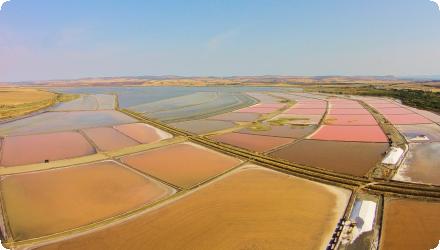
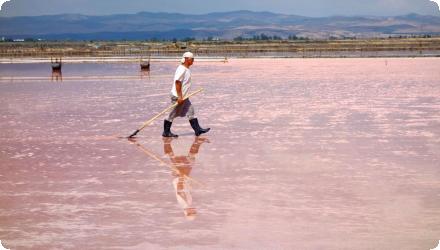
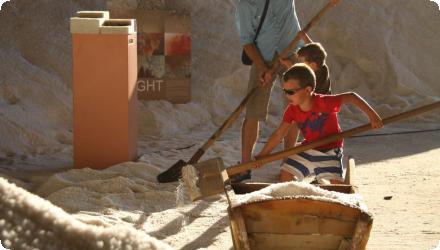
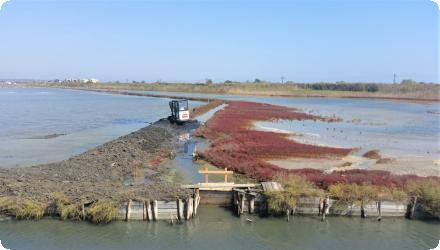

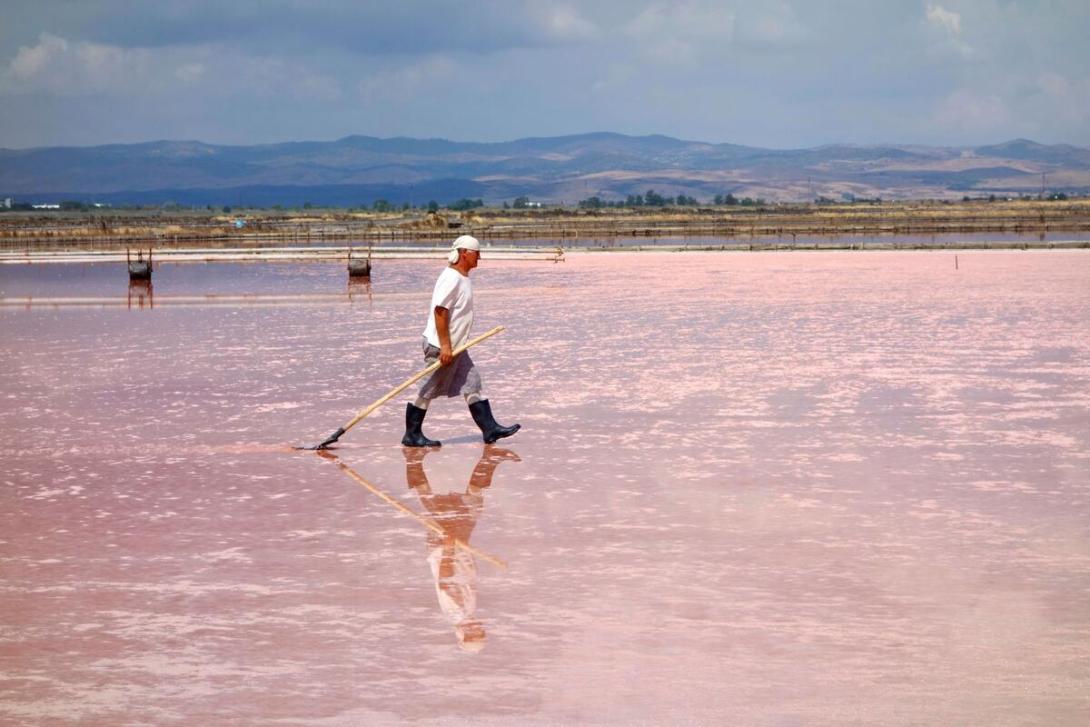
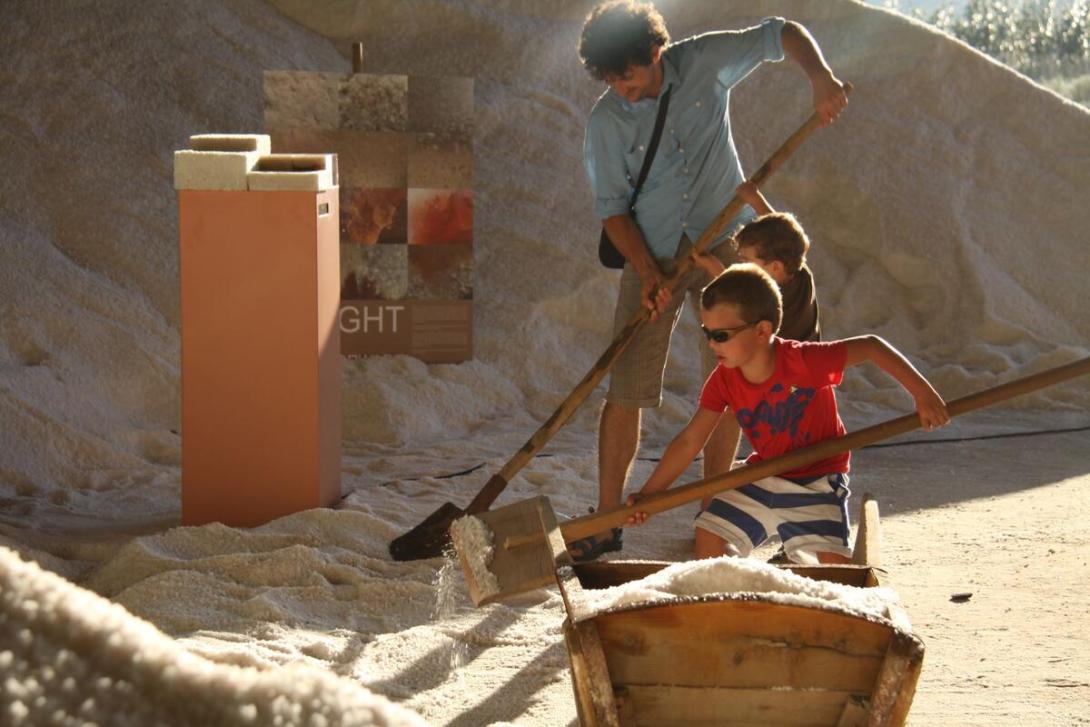
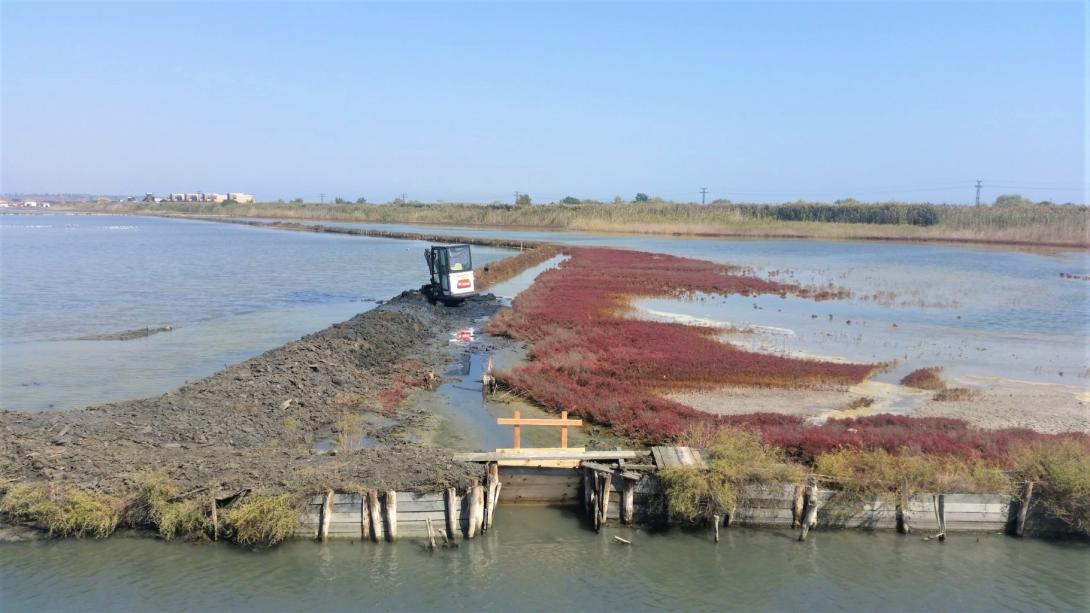
LIFE17 NAT/BG/000558 “Lagoon of LIFE” (2018–2024) €1,836,683